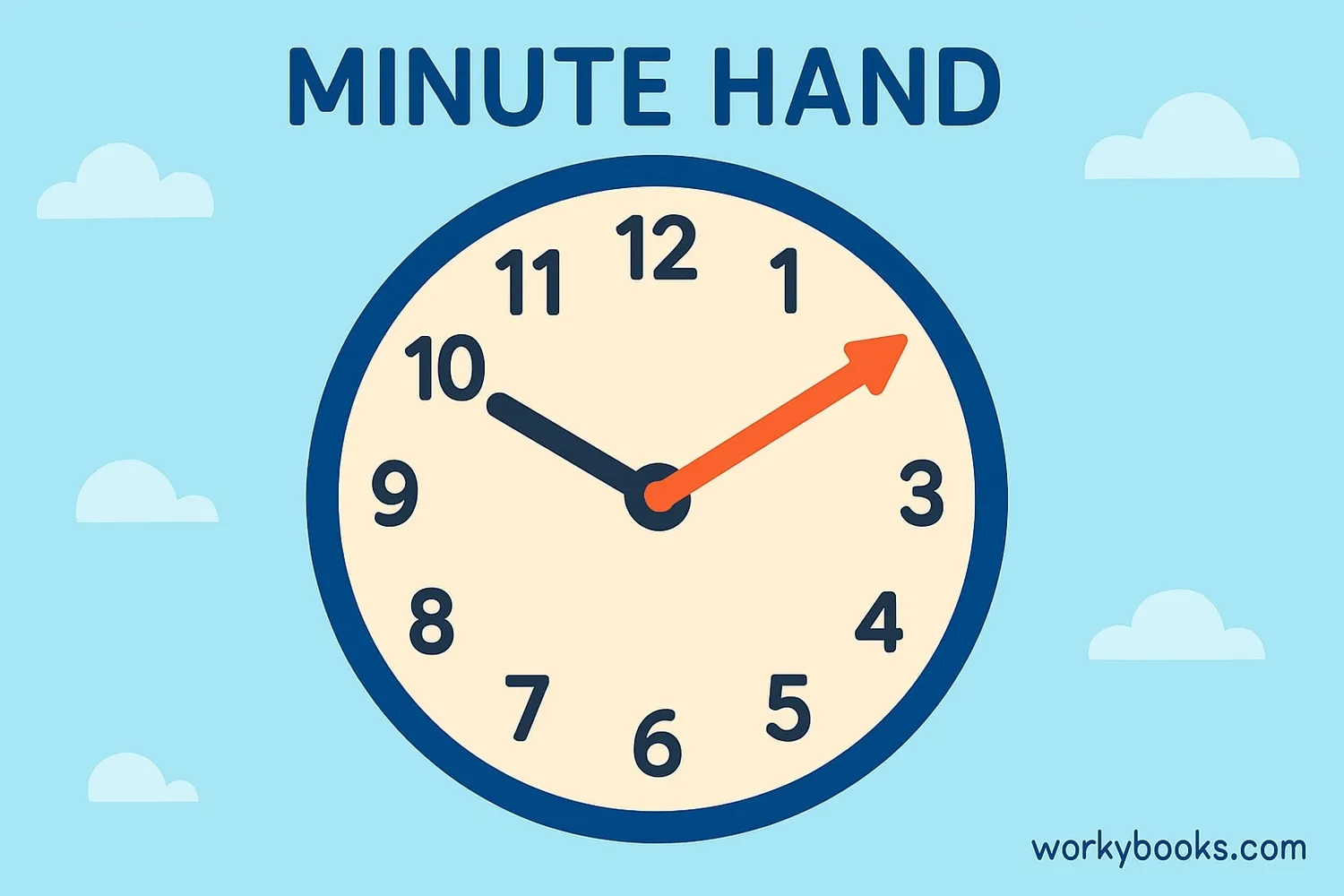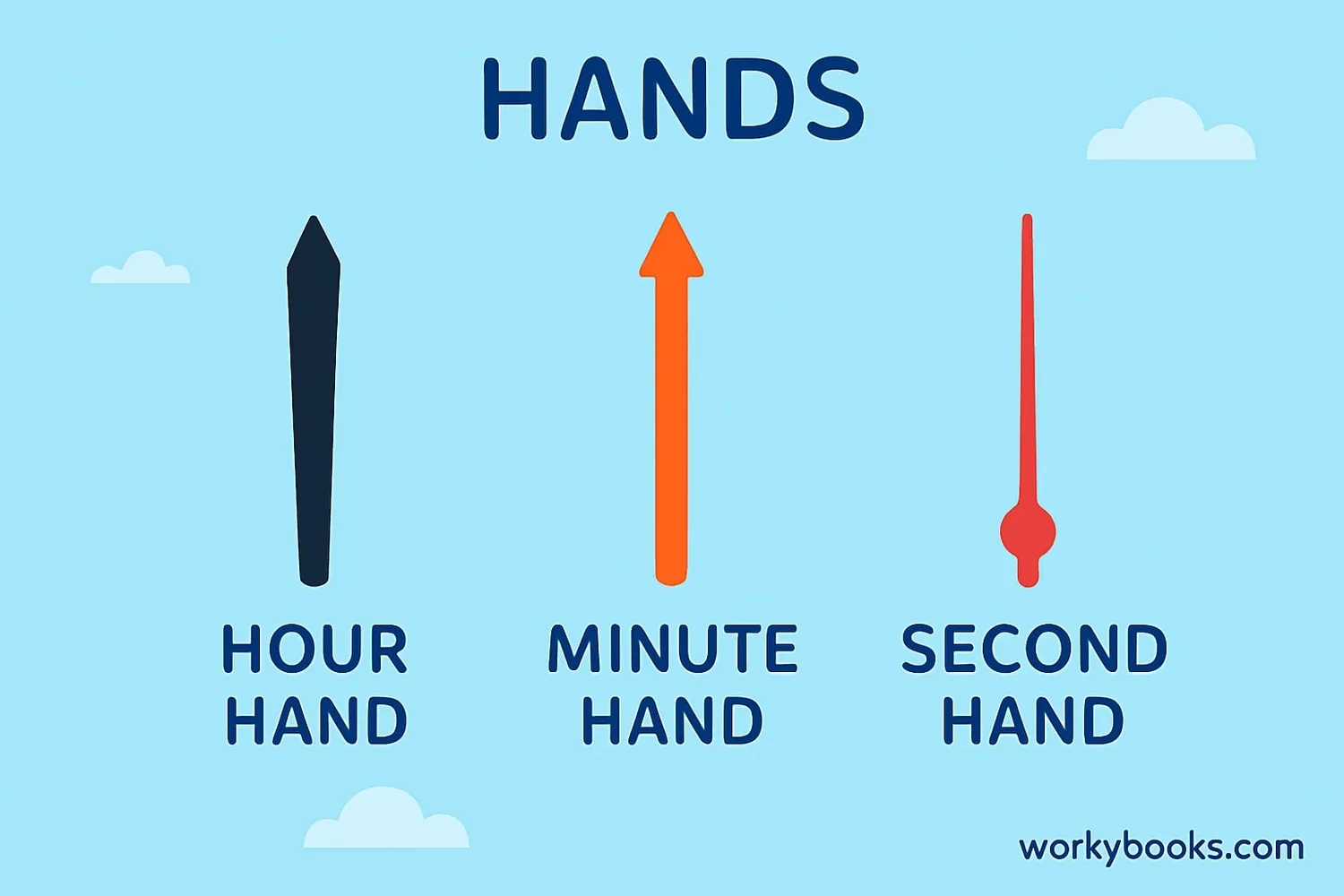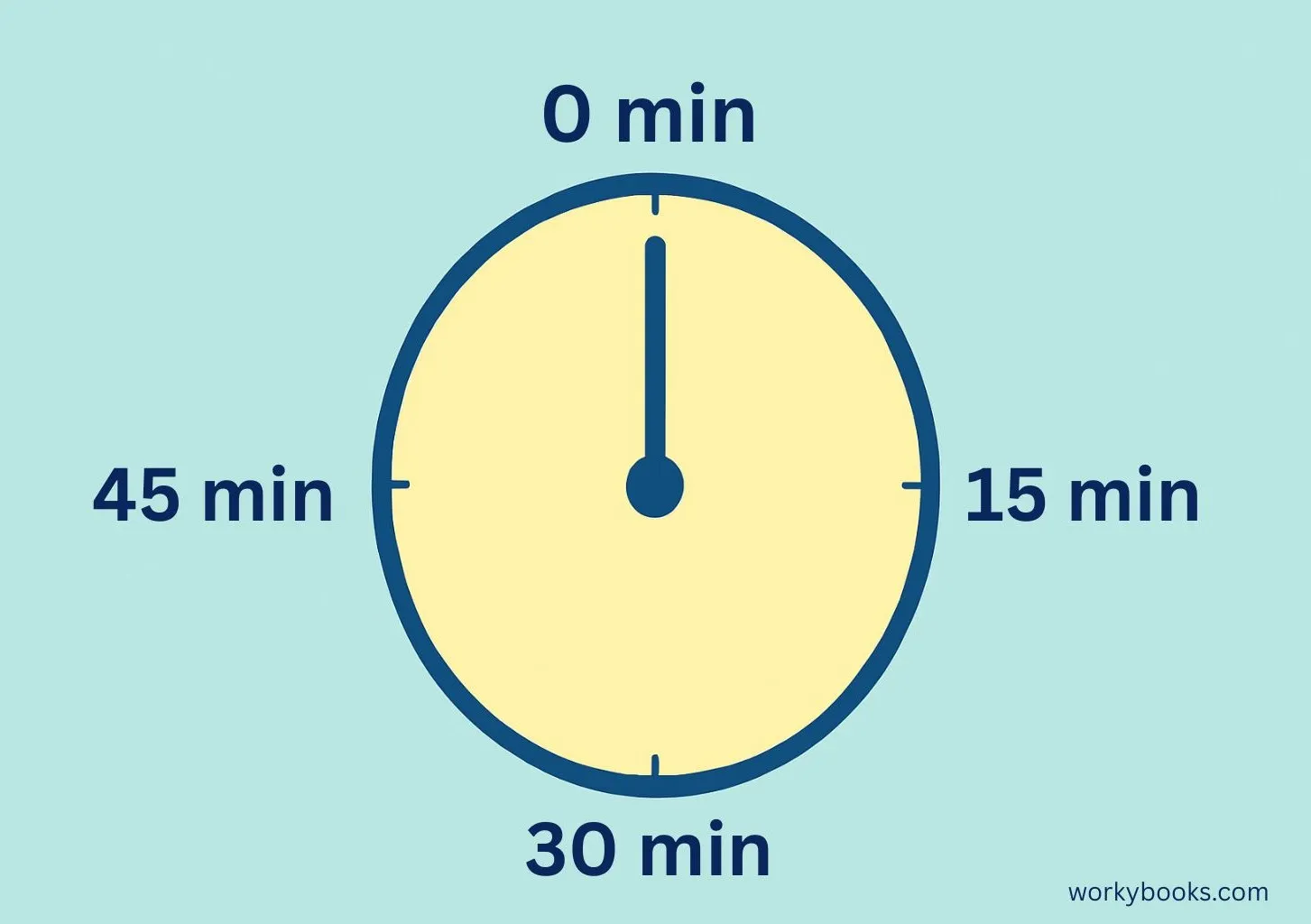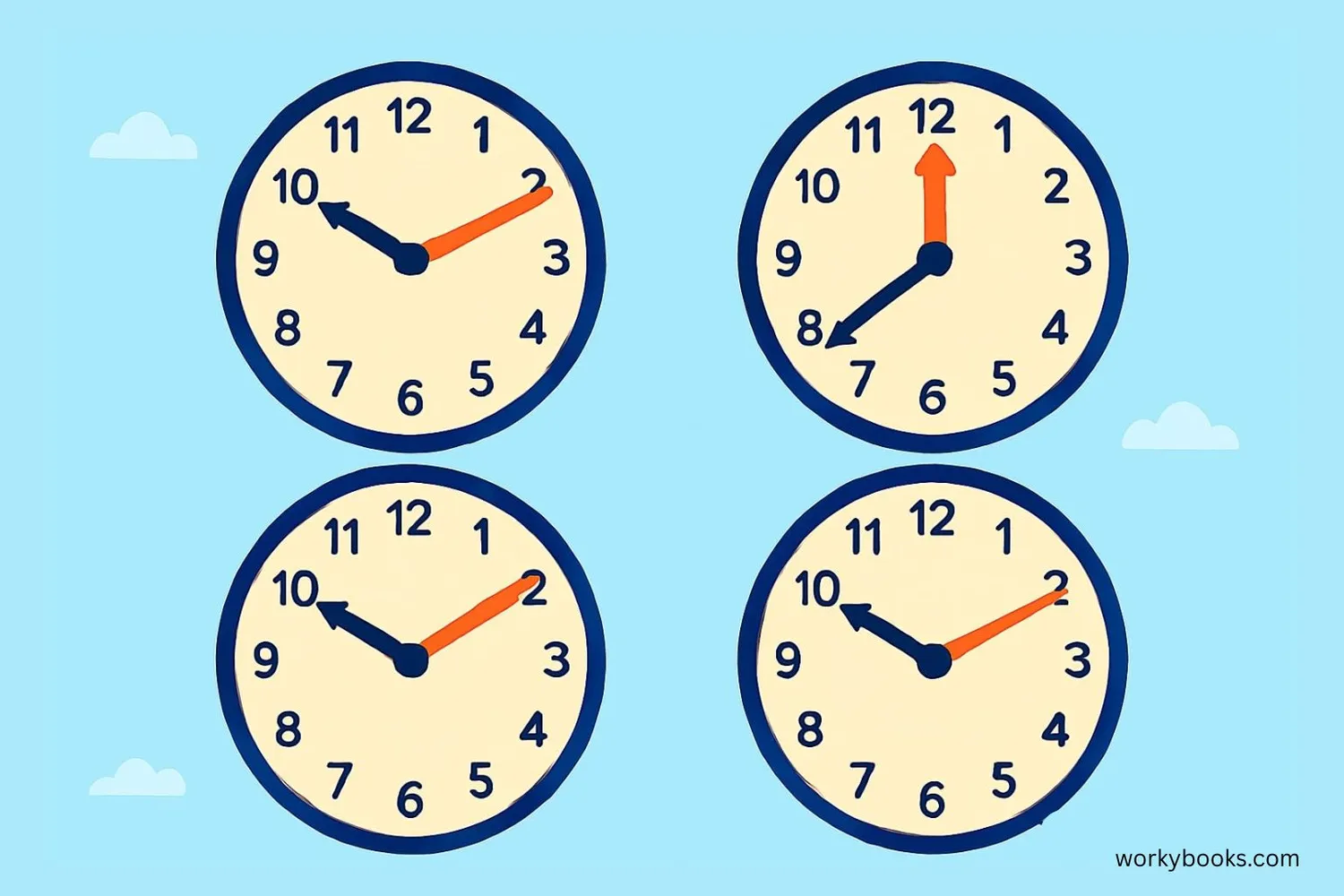Minute Hand - Definition, Examples, Quiz, FAQ, Trivia
Learn to tell time by understanding the minute hand on analog clocks with easy explanations and practice activities
What is the Minute Hand?

The minute hand is the longer hand on an analog clock that shows how many minutes have passed in the current hour.
As the minute hand moves around the clock, it tells us how many minutes have passed since the hour began. When the minute hand points straight up to the 12, it means it's exactly that hour (like 3:00). When it points to the 3, it means 15 minutes past the hour (like 3:15).
The minute hand completes one full circle around the clock every 60 minutes, which is one hour. Understanding how to read the minute hand is an important skill for telling time on analog clocks.
Key Concept
The minute hand is usually the longer hand on an analog clock and shows how many minutes have passed in the current hour.
Identifying the Minute Hand

On most analog clocks, you'll find three hands:
1. The Hour Hand: This is usually the shortest hand. It moves slowly and shows what hour it is.
2. The Minute Hand: This is usually the longer hand (but not always the longest). It moves at a medium pace and shows how many minutes have passed in the current hour.
3. The Second Hand: This is usually the thinnest and longest hand. It moves quickly, ticking each second.
To identify the minute hand, look for the hand that is longer than the hour hand but might be shorter or similar in length to the second hand. On many clocks, the minute hand is a different color or style from the other hands.
Remember
The minute hand is usually longer than the hour hand. If a clock has a second hand, the minute hand is typically thicker and moves more slowly.
Reading the Minute Hand

Reading the minute hand might seem tricky at first, but it's easy once you know the pattern. Each number on the clock represents 5 minutes:
Counting by Fives: When the minute hand points to:
- 12 = 0 minutes
- 1 = 5 minutes
- 2 = 10 minutes
- 3 = 15 minutes
- 4 = 20 minutes
- 5 = 25 minutes
- 6 = 30 minutes
- 7 = 35 minutes
- 8 = 40 minutes
- 9 = 45 minutes
- 10 = 50 minutes
- 11 = 55 minutes
For minutes between the numbers, you can count the small marks. Most clocks have 60 small marks around the edge—each representing 1 minute.
Reading Tip
Remember: Each number on the clock equals 5 minutes. To find how many minutes, multiply the number by 5 (3 = 3 × 5 = 15 minutes).
Examples

Let's practice reading the minute hand with some examples:
Example 1: The minute hand points to the 12, and the hour hand points to the 3.
This means it's 3:00 (3 o'clock). The minute hand shows 0 minutes.
Example 2: The minute hand points to the 3, and the hour hand points between the 3 and 4.
This means it's 3:15 (15 minutes past 3). The minute hand shows 15 minutes.
Example 3: The minute hand points to the 6, and the hour hand points between the 3 and 4.
This means it's 3:30 (half past 3). The minute hand shows 30 minutes.
Example 4: The minute hand points to the 9, and the hour hand points close to the 4.
This means it's 3:45 (45 minutes past 3, or quarter to 4). The minute hand shows 45 minutes.
Practice looking at clocks around you and identifying where the minute hand is pointing!
Practice Tip
When the minute hand points to the 6, we say "half past" the hour. When it points to the 9, we say "quarter to" the next hour.
Practice Quiz
Test your understanding of the minute hand with this 5-question quiz. Choose the correct answer for each question.
Frequently Asked Questions
Here are answers to common questions about the minute hand:
Time Trivia
Discover interesting facts about time and clocks:
Ancient Timekeeping
The first mechanical clocks were invented in Europe in the 14th century. Before that, people used sundials, water clocks, and hourglasses to tell time.
Clock Hands Direction
Clock hands move clockwise (to the right) because that's the direction shadow clocks (sundials) moved in the Northern Hemisphere, where clocks were invented.
World's Largest Clock
The world's largest clock face is on the Abraj Al-Bait Tower in Mecca, Saudi Arabia. The clock face is 43 meters (141 feet) in diameter!
The Word "Minute"
The word "minute" comes from the Latin word "minuta" which means "small." It was called this because a minute is a small part of an hour.





